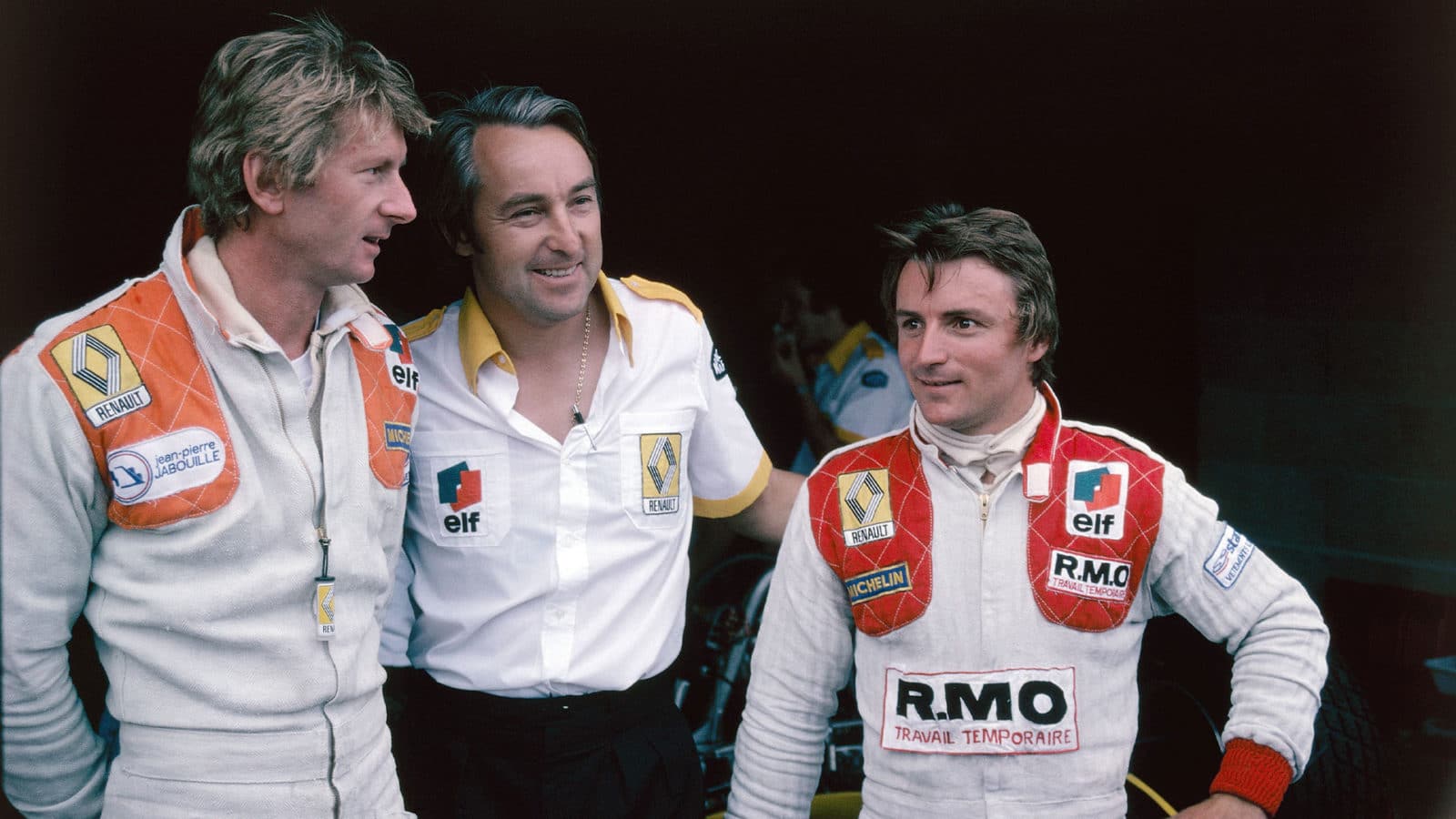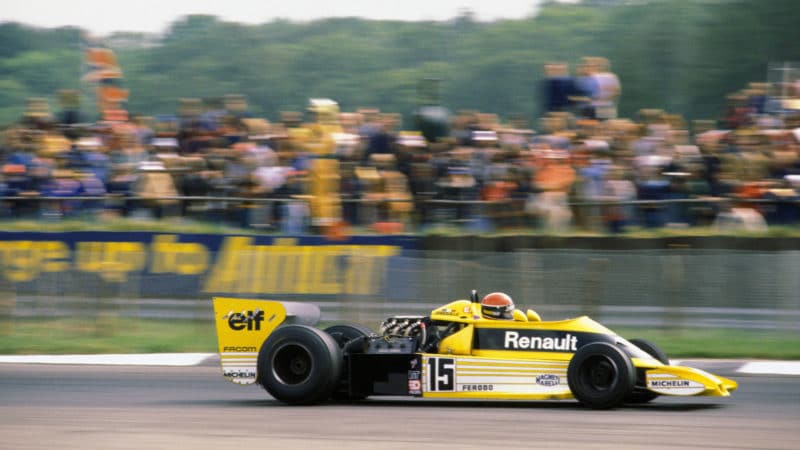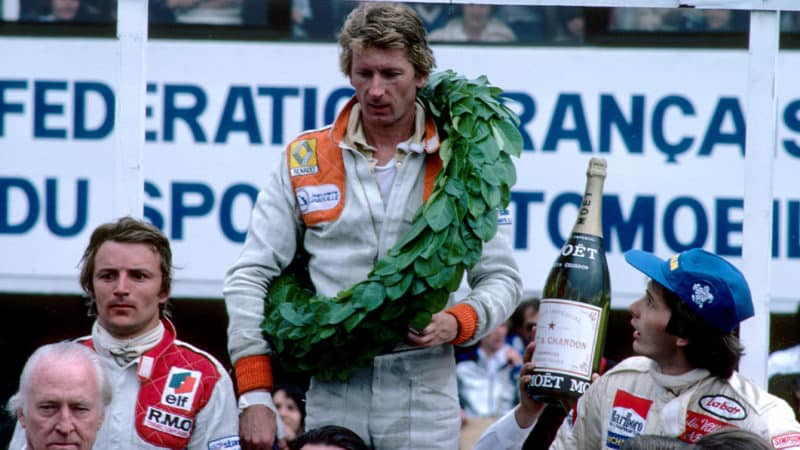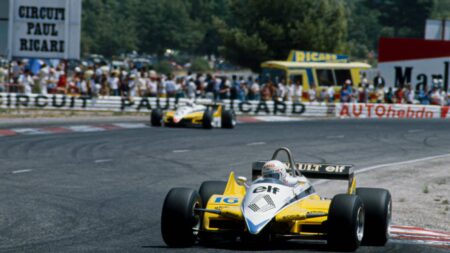“Renault had understood at the time that what you need in a team is somebody who is more precise, more technical, to push things forward. Indeed, even when René was there, everything went through me because we gained time, and the engineers were used to working with me. I remember once at Interlagos we were really struggling with the suspension and after a lot of hard work, we got the set-up right and I took pole. And René was still a long way back, so they came to ask me, because at the end of the day it wasn’t the engineers who had found the set-up, it was me, so they asked if I would share the set-up with René. I said ‘No problem’ and René then set the third- or fourth-fastest time. We were good together, for the team.
“That race still grates with me because I took pole and then in the warm-up, I broke a turbo. And I said to [team boss Gérard] Larrousse, I want to start in the T-car. And he said ‘No, we’ll fix it’. I replied, ‘You can change the turbo but if you don’t know the cause, it will happen again.’ But he wouldn’t let me start in the T-car: they changed the turbo. From the start I was fighting with Gilles again – it was often that way – and I was leading by around 10 seconds with Gilles second and René already quite a long way back. Then what was always going to happen happened, and the turbo failed. And that day, René won the race.
“And at Kyalami there was a problem when I was leading. I had taken pole and René ended up winning again. It was nice, after the race, that René dedicated his victory to me. He was like that.”
The two Frenchmen were aware of the dangers of that era in terms of the way the cars were designed. “Yes, the front wheel line was alongside our knees and we could touch the front wheels from the cockpit. Imagine! Eventually they would have attached the front suspension to our legs,” he laughs, “but seriously, I told them that with the steering rack just above our legs, if we had a big shunt then both legs would be broken. René and I knew the cars were hyper-dangerous, but the passion was so strong, you know?”
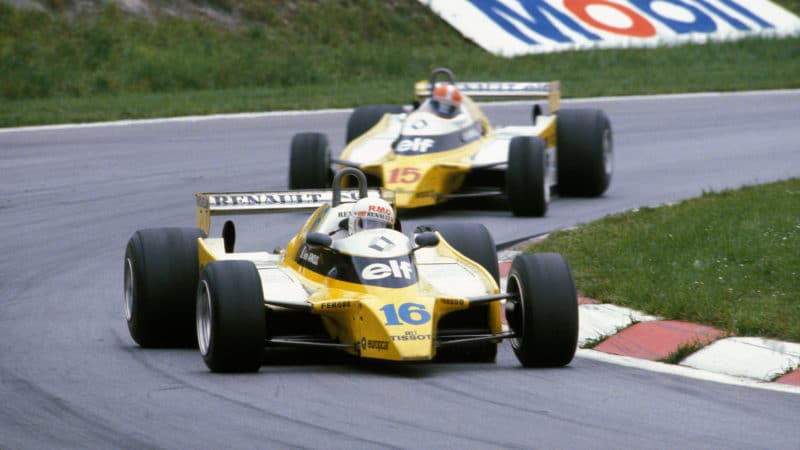
Arnoux (leading Jabouille at Austria ’79 above) would often reap the rewards of his team-mates development work
Grand Prix Photo
Jabouille has a simple but intelligent take on the driver’s job he did and sees some parallels in contemporary F1.
“I believe that when you are passionate and you have the gift, it’s all a question of hard work with the engineers to improve the car. I quickly realised that I could take the car that they gave me to the limit quite easily, so afterwards I considered that we had to work hard to improve the car, in order to go faster.
“I never saw René, or any of my team-mates, as a threat, although he surprised me sometimes with his speed. He was very fast over one lap, but he did not focus too much on the car. I was surprised when he went to Ferrari because he didn’t seem to be their style somehow.”
Both French, both racers, both gave their all for the honour of the Régie. But two more different people you are unlikely to meet within a racing team.
